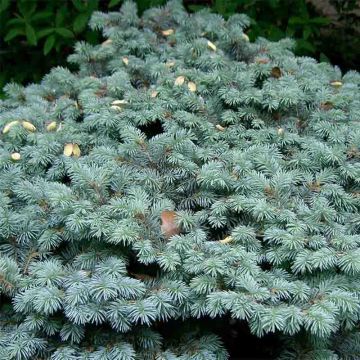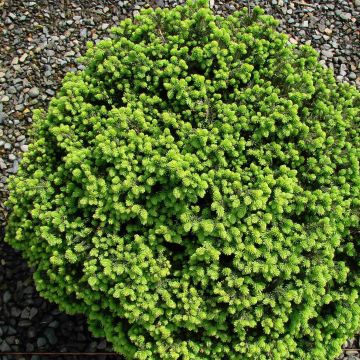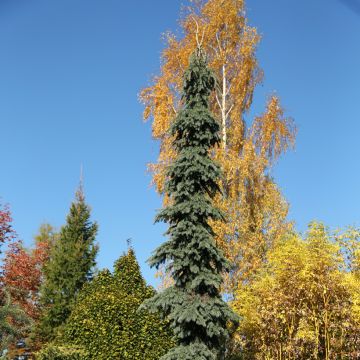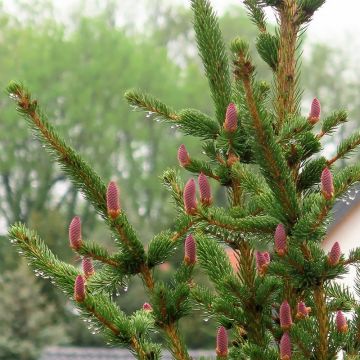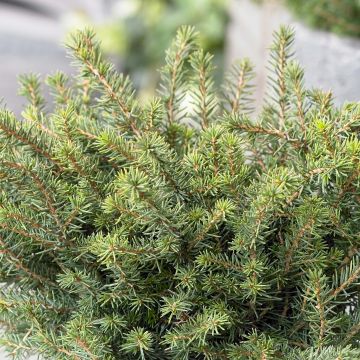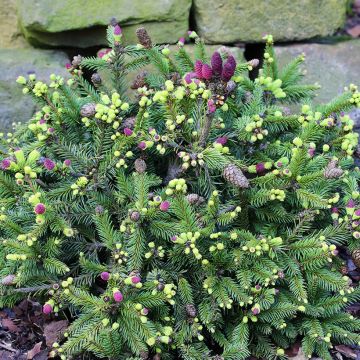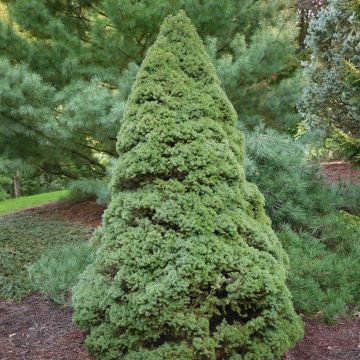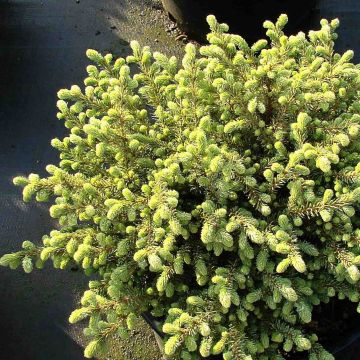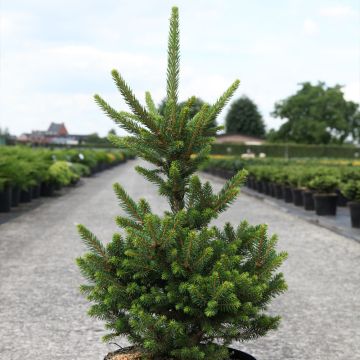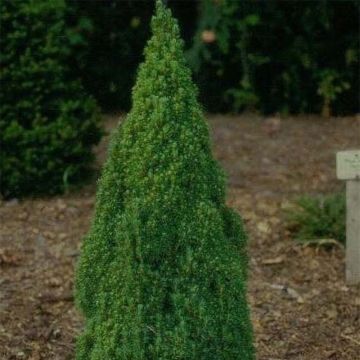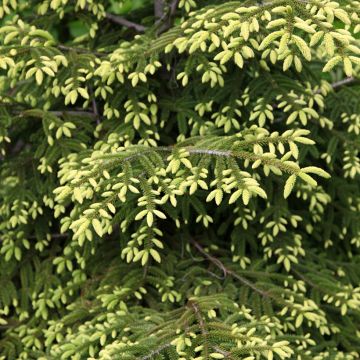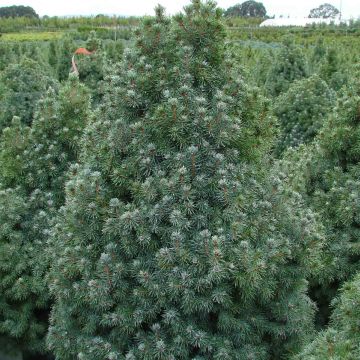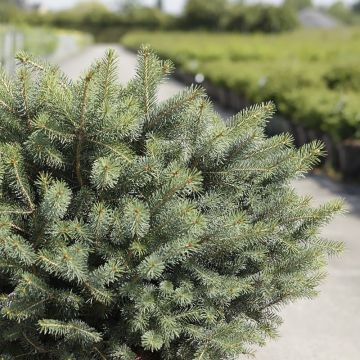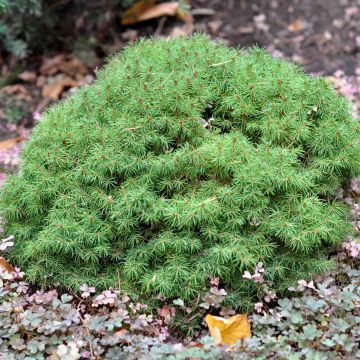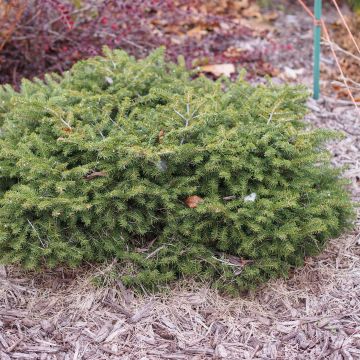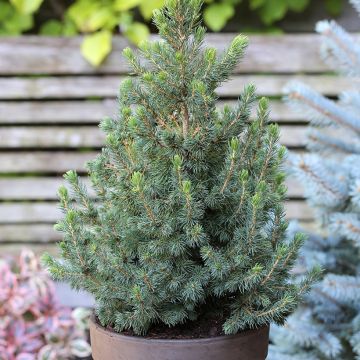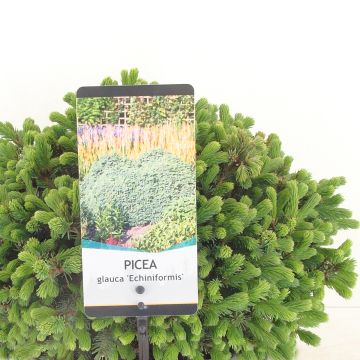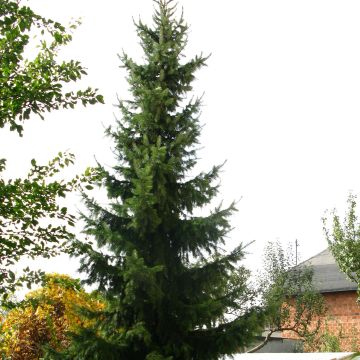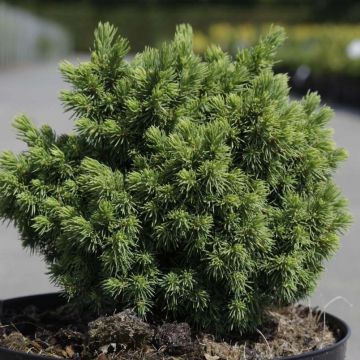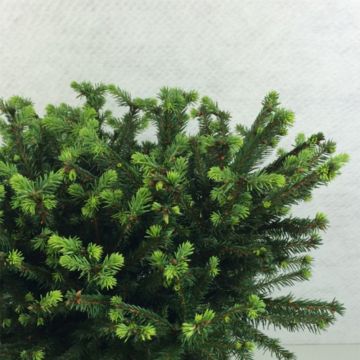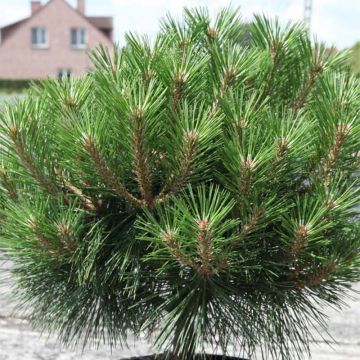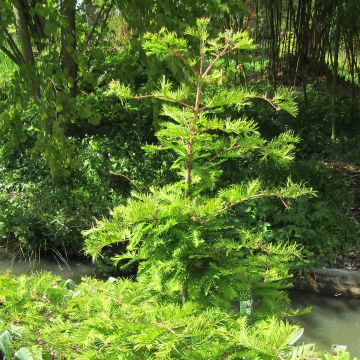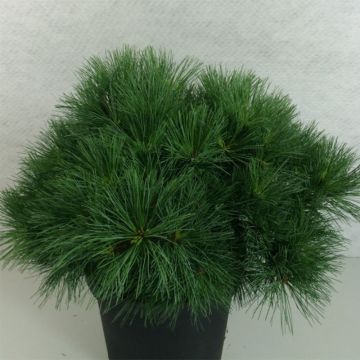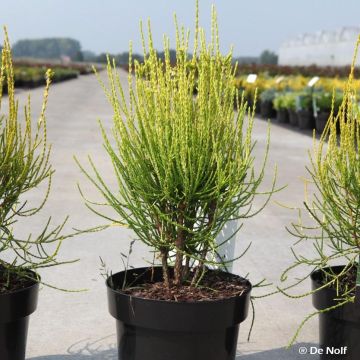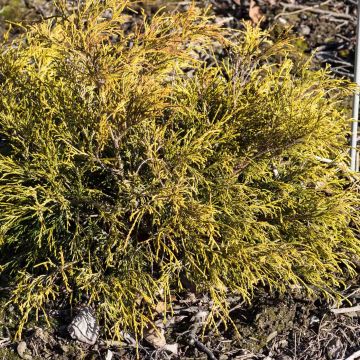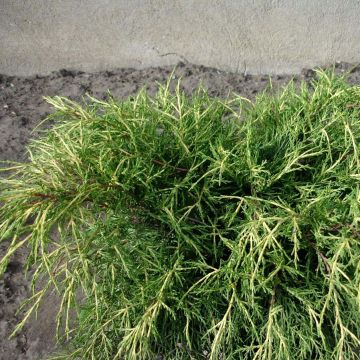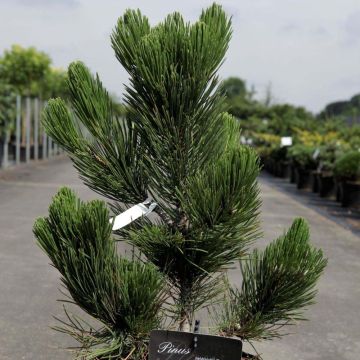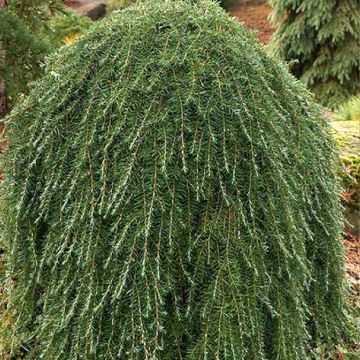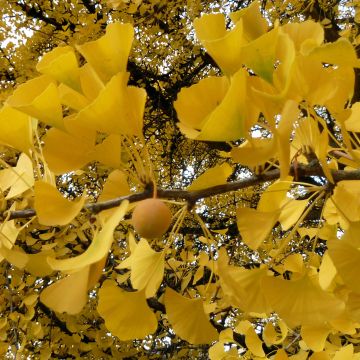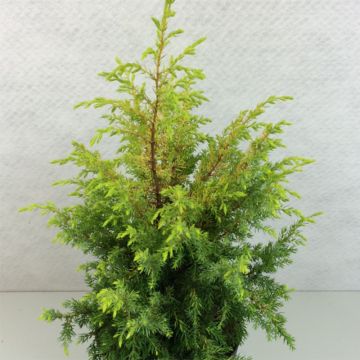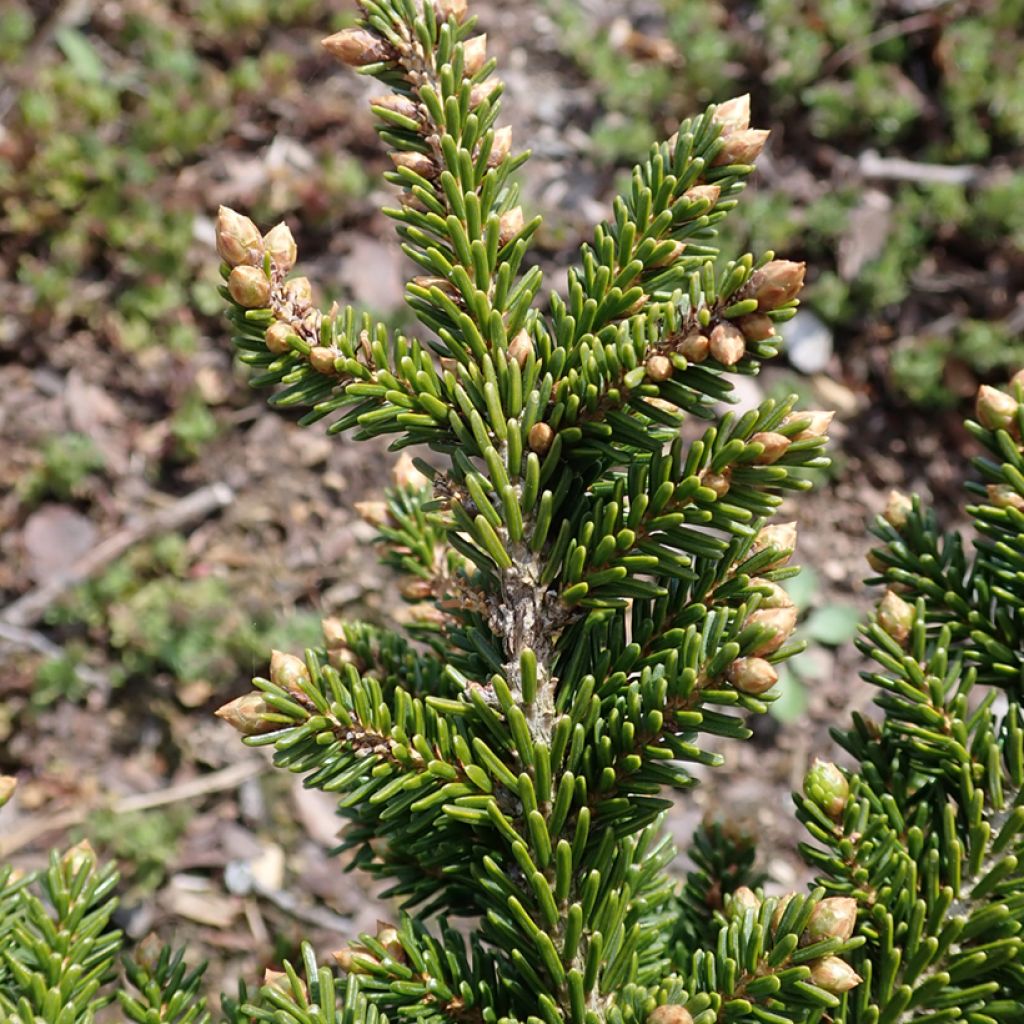

Picea orientalis Jewel - Caucasian Spruce
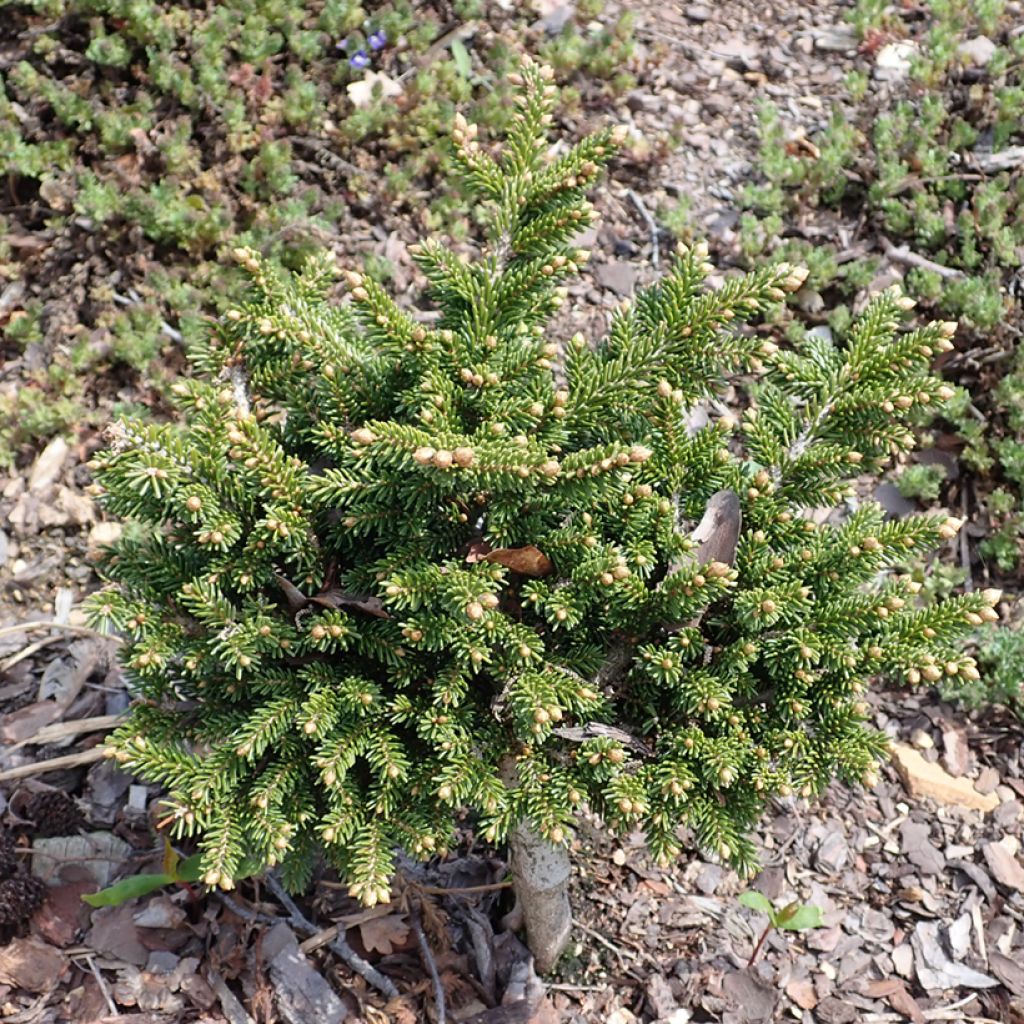

Picea orientalis Jewel - Caucasian Spruce
Picea orientalis Jewel - Caucasian Spruce
Picea orientalis Jewel
Caucasian Spruce, Oriental Spruce
Why not try an alternative variety in stock?
View all →This plant carries a 24 months recovery warranty
More information
We guarantee the quality of our plants for a full growing cycle, and will replace at our expense any plant that fails to recover under normal climatic and planting conditions.
From €5.90 for pickup delivery and €6.90 for home delivery
Express home delivery from €8.90.
Does this plant fit my garden?
Set up your Plantfit profile →
Description
The Picea orientalis Jewel is a truly dwarf variety of Oriental spruce. It reaches about forty centimeters in all directions, forming a ball of dark green. It is a very graphic small conifer that will fit perfectly in a contemporary garden with a sleek style and will work wonders in a rock garden, even in small dimensions. It is also obviously a very good subject for container planting. Very hardy and undemanding, this miniature conifer requires little maintenance. It adapts to most soils, requiring only good drainage, as well as a sunny to semi-shady location.
The Picea orientalis, also known as Oriental spruce, is an evergreen conifer of the Pinaceae family, which also includes firs, cedars, and larches. This species of spruce is native to northeastern Turkey and the Caucasus. In its natural habitat, this large pyramidal tree reaches a height of 30 to 45 meters (98 feet 5 inches to 147 feet 7 inches). It grows well on the humus-rich soil of mixed or evergreen forests, as well as on the rocky slopes of the Black Sea coast.
'Jewel' is, as its English name indicates, a true gem. It naturally adopts a rounded habit reminiscent of a hedgehog with its small branches shooting out in all directions. With very slow growth, it reaches 40 cm (15.7 in) in height and width, making it a choice subject for a small rock garden where it will stay in its place without bothering its neighbors! Its short and dense branches bear small needles, of a beautiful dark green. Well distributed throughout the diameter of the branches, they form clusters that are aesthetically pleasing.
With its charming appearance, this conifer is not fragile at all, quite the opposite. It withstands extreme cold down to -25°C to -30°C and is not afraid of wind. Growing in neutral to slightly acidic soils, it only requires good drainage and does not like excess water. Well rooted, it tolerates temporary drought but appreciates occasional watering, especially during prolonged dry periods.
The Oriental spruce Jewel is a precious conifer for rock gardens, where its slow growth and small size will be particularly appreciated. Well suited for container planting, it will also adorn a balcony or terrace. In a contemporary or mineral garden, its graphic habit and fairly dark colour will be definite assets. It can be planted alongside other dwarf plants that will not compete with it.
The Abies balsamea Nana with its bright young shoots will be a good neighbor, as well as the magnificent Abies koreana Kohout's Icebreaker® which, due to its larger size, should be planted in the background. With its curious needles with a white underside, this dwarf Korean fir will complement the dark green foliage of the 'Jewel' spruce very well. The Pinus mugo Golden Glow will create an interesting contrast with its bright golden young foliage, as well as the Picea pungens 'Blaukissen', a dwarf spruce with silver-blue foliage.
Picea orientalis Jewel - Caucasian Spruce in pictures
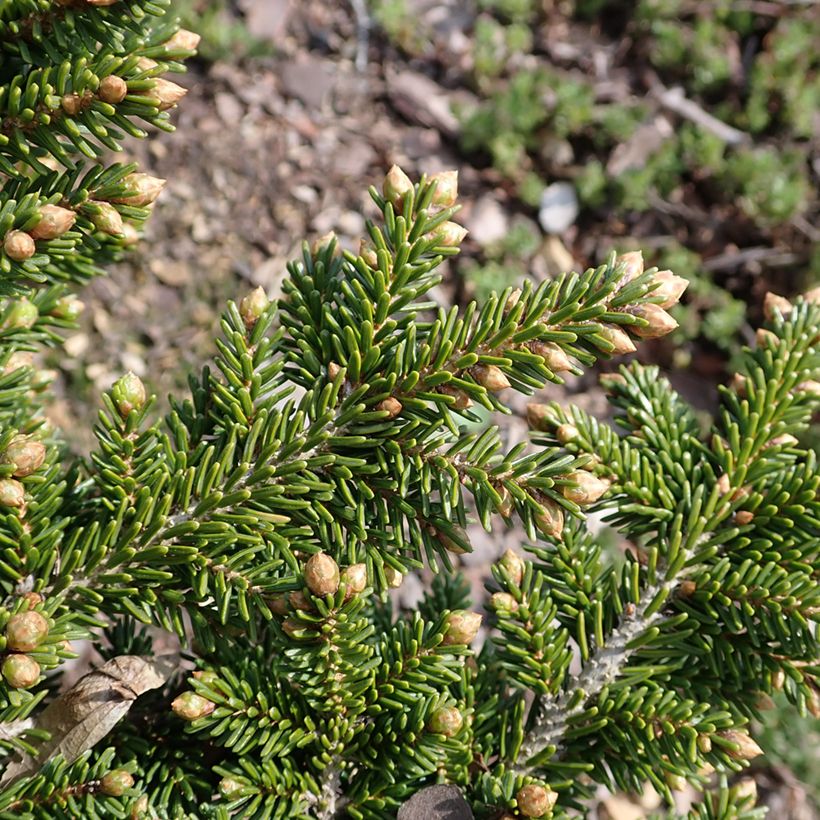

Plant habit
Foliage
Botanical data
Picea
orientalis
Jewel
Pinaceae
Caucasian Spruce, Oriental Spruce
Cultivar or hybrid
Other Picea
Planting and care
The Picea orientalis Jewel can be planted from September to November and from February to April in ordinary, well-drained, preferably fertile soil, even slightly chalky and occasionally dry. Sandy, humus-rich or rocky soil will be perfectly suitable. Choose a sunny location or, at most, partially shaded. This variety is resistant to wind. Soak the root balls well before planting. Add organic amendment at planting and water generously in the first few years, and in case of prolonged drought. Apply a special conifer fertilizer every year in April and cultivate the soil in summer. This very hardy conifer (up to -30°C (-22 °F) at least) is however sensitive to heavy, waterlogged soils in winter. Pruning is normally not necessary. Sometimes, an erect axial branch emerges from the bush, regaining the original growth habit of Picea orientalis. In this case, it should be removed to maintain a regular habit.
Planting period
Intended location
Care
This item has not been reviewed yet - be the first to leave a review about it.
Conifers
Haven't found what you were looking for?
Hardiness is the lowest winter temperature a plant can endure without suffering serious damage or even dying. However, hardiness is affected by location (a sheltered area, such as a patio), protection (winter cover) and soil type (hardiness is improved by well-drained soil).

Photo Sharing Terms & Conditions
In order to encourage gardeners to interact and share their experiences, Promesse de fleurs offers various media enabling content to be uploaded onto its Site - in particular via the ‘Photo sharing’ module.
The User agrees to refrain from:
- Posting any content that is illegal, prejudicial, insulting, racist, inciteful to hatred, revisionist, contrary to public decency, that infringes on privacy or on the privacy rights of third parties, in particular the publicity rights of persons and goods, intellectual property rights, or the right to privacy.
- Submitting content on behalf of a third party;
- Impersonate the identity of a third party and/or publish any personal information about a third party;
In general, the User undertakes to refrain from any unethical behaviour.
All Content (in particular text, comments, files, images, photos, videos, creative works, etc.), which may be subject to property or intellectual property rights, image or other private rights, shall remain the property of the User, subject to the limited rights granted by the terms of the licence granted by Promesse de fleurs as stated below. Users are at liberty to publish or not to publish such Content on the Site, notably via the ‘Photo Sharing’ facility, and accept that this Content shall be made public and freely accessible, notably on the Internet.
Users further acknowledge, undertake to have ,and guarantee that they hold all necessary rights and permissions to publish such material on the Site, in particular with regard to the legislation in force pertaining to any privacy, property, intellectual property, image, or contractual rights, or rights of any other nature. By publishing such Content on the Site, Users acknowledge accepting full liability as publishers of the Content within the meaning of the law, and grant Promesse de fleurs, free of charge, an inclusive, worldwide licence for the said Content for the entire duration of its publication, including all reproduction, representation, up/downloading, displaying, performing, transmission, and storage rights.
Users also grant permission for their name to be linked to the Content and accept that this link may not always be made available.
By engaging in posting material, Users consent to their Content becoming automatically accessible on the Internet, in particular on other sites and/or blogs and/or web pages of the Promesse de fleurs site, including in particular social pages and the Promesse de fleurs catalogue.
Users may secure the removal of entrusted content free of charge by issuing a simple request via our contact form.


































